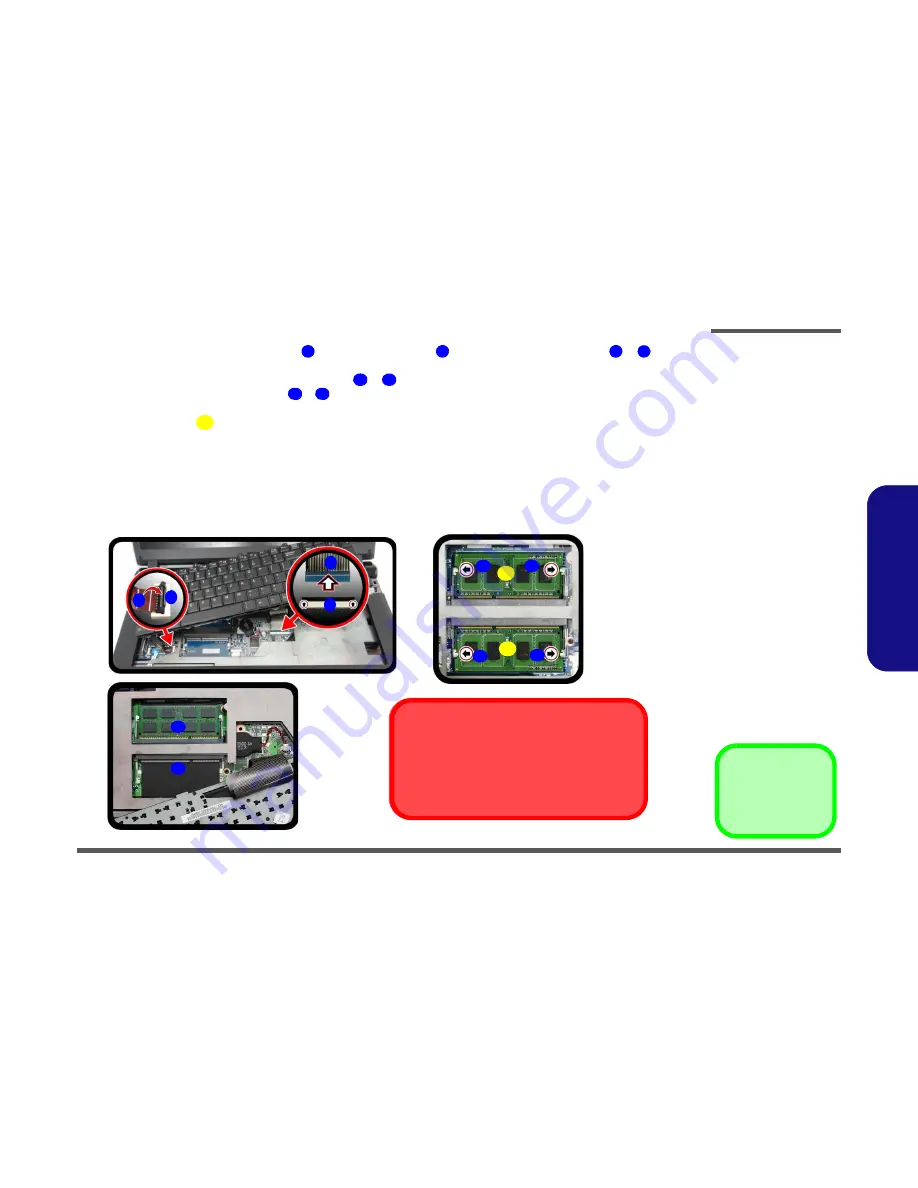
Disassembly
Removing the Secondary System Memory (RAM) 2 - 17
2.Disassembly
5.
Disconnect the keyboard ribbon cable
and LED ribbon cable
from the locking collar socket
&
by using
a small flat-head screwdriver to pry the locking collar pins away from the base. (
Figure 13
e
).
6.
Remove the keyboard and the memory sockets
&
will be visible (
Figure 13f
)
.
7.
Gently pull the two release latches (
&
) on the sides of the memory socket(s) in the direction indicated below
(
Figure 13g
)
.
8.
The RAM module
will pop-up, and you can remove it.
9.
Pull the latches to release the second module if necessary.
10. Insert a new module holding it at about a 30° angle and fit the connectors firmly into the memory slot.
11. The module’s pin alignment will allow it to only fit one way. Make sure the module is seated as far into the slot as it
will go. DO NOT FORCE the module; it should fit without much pressure.
12. Press the module in and down towards the mainboard until the slot levers click into place to secure the module.
13. Replace the bay cover and screws.
14. Restart the computer to allow the BIOS to register the new memory configuration as it starts up.
6
7
8
9
Figure 13
RAM Module
Removal (cont’d.)
e. Disconnect the key-
board ribbon cable and
LED ribbon cable from
the locking collar sock-
et by using a small flat-
head screwdriver to pry
the locking collar pins
away from the base.
f. Remove the keyboard
and the memory sock-
ets will be visible.
g. Gently pull the two re-
lease latches on the
sides of the memory
socket(s) in the direc-
tion indicated.
14. RAM Modules
10
11
12
13
14
f.
e.
6
7
8
13
12
g.
9
11
13
12
14
14
Contact Warning
Be careful not to touch the metal pins on the module’s
connecting edge. Even the cleanest hands have oils
which can attract particles, and degrade the module’s
performance.
10
Summary of Contents for W703
Page 1: ......


















